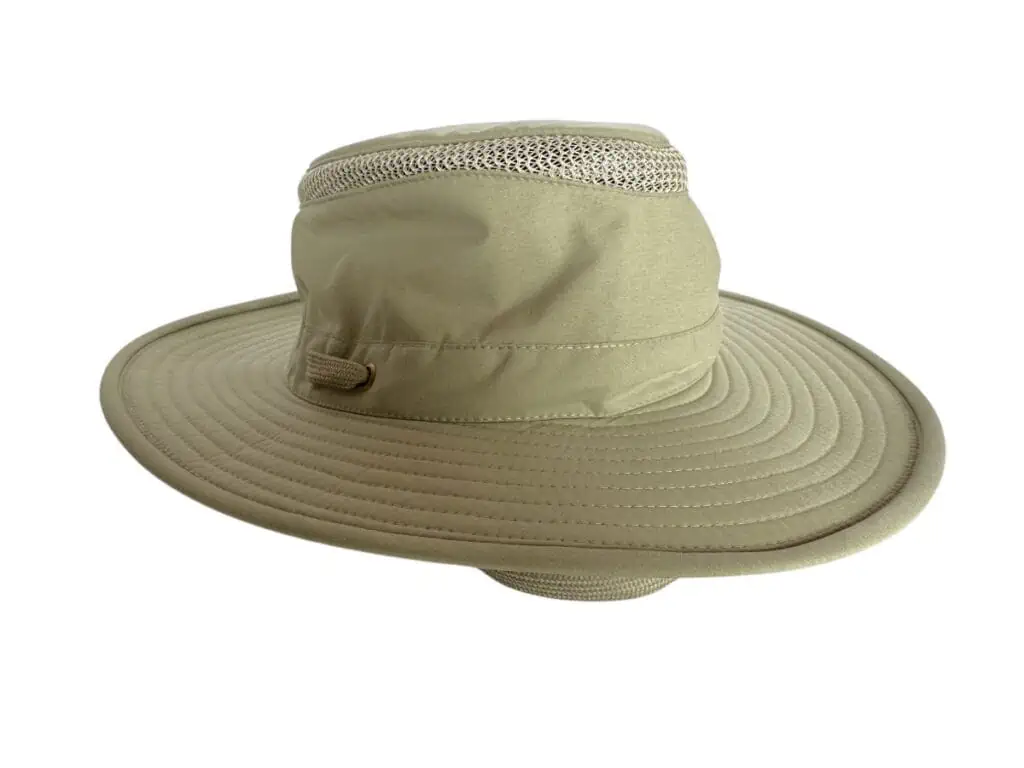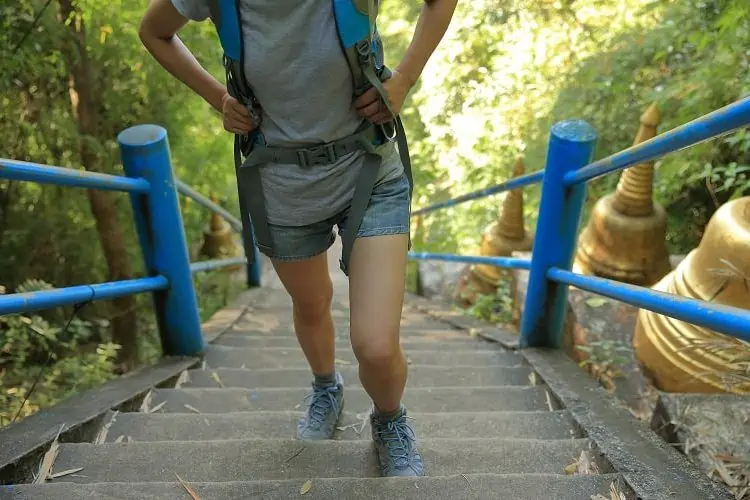1 Day In Iguazu Falls: Best Way to See the Argentina & Brazil Side
This post is part of a series on what to do when you have one day in port on a Cruise. You can find more posts from this series on my page, How To Spend One Day In Port.
This spring, we headed to Argentina for a 32-day semi-circumnavigational cruise of South America. While the cruise did not visit Iguazu Falls, we knew we couldn’t be so close and not spend some time at this World Heritage Site.
Long before the cruise date, we secured a two-night stay at the only hotel in the National Park, the Gran Melia. We arrived in Buenos Aires a few days before the cruise sailed. Before seeing any of this beautiful city, we were on a flight north for our 1 day in Iguazu Falls.
This article may contain affiliate links. We may earn a commission if you use these links to buy products or services. Please see our disclosure policy for full details. Thanks.
What is Iguazu Falls And Why Is This Such A Special Place
The Iguazu River runs through Brazil for over 800 miles and forms the borders between Brazil, Argentina, and Paraguay. Points in Foz do Iguaçu, Brazil; Puerto Iguazú, Argentina; and Ciudad del Este, Paraguay, have access to the Iguazu River, and the borders of all three nations may be seen at the same time.
The river runs through Brazil for most of its course. However, only 20% of the falls are in Brazil, and 80% of Iguazu Falls are in Argentina. According to Wikipedia, these falls make up the largest waterfall system in the world.
Iguazu Falls stands out for two main reasons. Firstly, it boasts around 275 waterfalls, each dropping between 210 and 269 feet. The sheer volume of water is staggering, with an average flow rate of 61,600 cubic feet per second annually. All in all, Iguazu Falls is much taller than Niagara Falls and twice as wide.

Secondly, the area surrounding Iguazu Falls, Iguazú National Park, holds significant ecological importance. It’s nestled within a subtropical rainforest teeming with diverse wildlife, including tapirs, giant anteaters, howler monkeys, ocelots, jaguars, and caymans. The forest has over 400 bird species, including the elusive Harpy Eagle.
This rainforest biome, historically stretching across parts of Brazil, Northern Argentina, Uruguay, and Eastern Paraguay, is renowned for its rich variety of habitats and species. The region supports a remarkable array of life with approximately 2000 plant species, including 80 tree species.
For these reasons, Iguazu Falls has earned its place on the UNESCO World Heritage Site list.
1 Day In Iguazu Falls — The Grand Tour: Argentina In The Morning, Brazil In The Afternoon
There are many ways to visit Iguazu Falls, including group tours, self-guided tours, and private tours. If walking isn’t for you, the Rainforest Ecological Train, a narrow-gauge railway, takes you through the park all the way up to the famous Devil’s Throat Fall (la Garganta del Diablo). You could also arrange a helicopter ride to fly over the falls or set up a jungle safari.
Before arriving in Argentina, we set up a 1 day privately guided tour of Iguazu Falls. We are up early to have a good breakfast before meeting up with our guide, Crislaine, at 9:00 am. Our hotel sits adjacent to the trails that lead to the falls. So once we meet up with our guide, all we need to do is walk out the back door and off to the falls.
The Argentine Side of Iguazu Falls
We head down the first boardwalk to start the tour of the lower circuit (circuito inferior). Cris points out the numerous Coatis (small raccoon-like animals) running around. These cute little guys may be only one of two animals we see here who are not timid or afraid of humans. The others are the Capuchin monkeys.



Because of our early start, there are not many tourists on the trails yet, which is another advantage of our location in the park. As we traverse the many stairs and walkways, we are surrounded by the jungle, and water flows everywhere.
Many birds fly about, and you can hear the howler monkeys in the distance. We come to our first overlook and take some more photos of Chico Falls and Dos Hermanas (two sisters) Falls. You can see a rainbow in front of Dos Hermanas, one of many we see during our time in the park.


This is where you transition from the lower to the upper circuit (Paseo Superior). These types of hikes are why I wrote my post on getting in shape for travel. If you are out of breath doing the lower circuit, the upper circuit will make your legs feel like jelly. And we are still in Argentina…
Mass storms and flooding in the later months of 2023 closed down the park, turning most boardwalks into rivers. Much of the rail infrastructure for the park’s train was destroyed. As we get closer to Devil’s Throat, you can see where the rails were washed away. Needless to say, the ecological jungle train was not running during our stay.
As we look out over San Martin Falls, you have one of the best views of San Martin Island. Oddly enough, with all the falls and water rushing around, this river system has an island in the middle of all the chaos. While San Martin Island and Devil’s Throat Falls are in Argentina, they are best seen from Brazil.



After hiking the lower and upper circuits of the Argentinian side of Iguazu Falls, we follow the trails back to our hotel to refresh and prepare for the drive to Brazil.
1 Day In Iguazu Falls: This Afternoon We Are In Brazil
It’s about a one-hour drive from the Argentinian Park to the Brazilian park, depending on the lines at the border of Brazil. Cris told us there was a good snack bar and restaurant on the Brazilian side of the park, so we decided to wait until we were there for lunch. We are lucky; the line at the border is short, and we are through customs in just a few minutes.
There are many differences between the structures of the two parks. In Argentina, you walk to everything and cross many boardwalks. In Brazil, parking is at the main entrance. There, you must take a bus into the park to see the falls. Fortunately, we are with a licensed guide who has permission to drive into the park, saving us the bus ride.


The circuit around the falls is mostly a paved concrete path and is far shorter at around 1200 meters than in Argentina. But the views are no less thrilling, including the viewing platform in the form of a bridge built into the river where falls are behind and in front of you.
From a couple of viewpoints, you can see San Martin Island, and there are even falls on the island. After our walk out into the middle of the river on the bridge, we head to the elevator that takes you back to the top, so you don’t have to retrace your steps.
Next, we drive to Macuco Station for the boat ride under the falls. The tour starts with a short Jungle Safari bus ride. The guide on the bus explains the jungle’s flora and fauna in English and Spanish. The ride is refreshing, as it’s in the shade of the rainforest, and it’s pretty much the only thing we’ve done all day that doesn’t include hiking.
When you reach the lower station, you can purchase a towel, a poncho, and a locker key. Bring some Brazilian Reals with you if you can. You don’t need much, but the Wi-Fi may not be accessible for the point-of-sale machines, and you won’t be able to use a credit card. And while we had Argentinian pesos, nobody outside Argentina would take that money.


Once changed, we headed to the funicular that took us down to the dock on the river and our boat. Now, we’ve been looking at massive amounts of water all day. We know we are on a zodiac and will most likely get wet, but we had no idea that these crazy Brazilians drive the boat right into the falls. The pilot and the guide were covered head to toe in rubber suits; that should have been a clue.


I’m glad the river ride was our last stop; it was an exhilarating way to end our 1 day in Iguazu Falls. On the way back to Argentina, we get to the border crossing in Brazil just before a busload of tourists arrives. We are so happy not to wait for them to go through it.
What To Wear For Your Trek Through Iguazu Falls
It’s important to note that Iguazu Falls is in the middle of a rainforest and a jungle. Because of this, you need to wear a good insect repellant (make sure it has deet) and clothing that has a high UPF. If you want to wear shorts and a short-sleeved top, use sunscreen with a high SPF. And I definitely recommend a hat. For shoes, I recommend good hiking shoes or sandals. You will be walking over uneven and, most of the time, wet terrain. We wore our trusty Merrils yet again.
The daytime high temperatures range from 73⁰ F in the cooler months (May – August) to 90⁰ F in the warmer months (Sep – April), so it’s also warm. But with all the mosquitos and the threats of Zika, Yellow Fever, and other diseases, we chose to wear long pants and long sleeves. Fortunately, many lightweight joggers and rash guards are on the market these days that provide sun/insect protection and are still breathable.
If you will be doing the boat ride on the Brazilian side of the Falls (highly recommended) make sure you take a change of clothes and shoes. Even if you wear the silly poncho they give you, you will be drenched at the end of the ride. Many people on the boat had changed into swimsuits before boarding the boat, which was smart thinking.
Gran Meliá Hotel: A Sanctuary Amidst Nature
Located in the center of the Iguazu National Park, the Gran Melia Iguazu was designed to face the stunning views of the Iguazú Falls from its rooms and suites, infinity pool, and fine dining options. Imagine the unique experience: staying in front of one of the Seven Natural Wonders of the World.

As we enter the hotel lobby, I am drawn to the floor-to-ceiling windows that frame my first sight of the falls. My husband upgraded us to the hotel’s premium service, “Red Level.” We were told that our room would take about 30 minutes to be ready, and we were escorted to the Red Level reception area of the lobby, where they had refreshing drinks and snacks throughout the day.
Shortly after, we are escorted to our room, a large room with a king-size bed and a panoramic view of the falls. Behind the falls we can also see the top of the Belmond Hotel das Cataratas on the Brazil side of Iguazu Falls.



The room has an elegant en-suite bath with a window over the sink area from which you can also see the falls.
This newer addition to the design of hotel rooms, windows between the sleeping and bath areas, is confusing, and I admit I do not like it. There is no soaker tub you could relax in to watch the falls. Indeed, you can only see the view when brushing your teeth at the sink.
This potential amenity is lost when you realize that anyone in the room can see anyone in the bath doing the things we all do in the bath. Additionally, at night, when you need to make a quick run to the toilet, the light from the bath most often will annoy your sleeping partner.
Other amenities accorded to Red Level guests include complimentary access to the Yasi Spa & Wellness Center, saunas, and gym. Here, there is a fantastic heated therapy pool. As we were just off a 24-hour travel day that included 2 long flights and 2 long delays, we took full advantage of this amenity to relax our stiff muscles before dinner.



The pool and sunbathing area are outside the spa, again offering amazing views of the falls. If you have the time, this is a beautiful place to spend an afternoon. Before dinner, we head up to the top floor, where there is an outside bar facing the falls again for a sunset cocktail.
Dining At The Gran Melia
At Merkado, breakfast is served every day. You can serve yourself from the buffet or order freshly made omelets and other egg dishes from the menu. We did not have the opportunity to eat lunch at the hotel. Still, from what I saw on the menu, there are more casual offerings of salads, pasta, burgers, and sandwiches.



In the evening, there are two menus at Merkado. One for the inside seating that, while focusing on Argentinian local foods, is more European in its choices. Here, you will find fresh fish, different kinds of pasta, and veggies. Outside is the Asado. Here, you choose your cut of beef, and it is cooked to your specification on the Asado Grill. In addition to the meat, there are numerous complementary sides.
On our first night, we dined inside. For our appetizer, we shared a salad composed of grilled peaches, burrata, and edible flowers; it was exquisite. We ordered the same entrée of seafood risotto, including shrimp, scallops, and squid.



To add more vegetables to our diet, we shared a plate of roasted wild mushrooms with a fried egg. I’ve never had mushrooms with egg and would have liked this plate more without it. Despite the egg, the dinner was terrific. We were left with an eager palate for the following evening’s Asado.
On day two, I felt I had earned a hearty Argentinian Asado after walking 17,445 steps, the equivalent of 7.2 miles while touring Iguazu Falls.
Tonight’s meal started with a traditional Argentine dish, grilled Provoleta (aka provolone), topped with fresh tomatoes and herbs from the garden. It was served with warm, fresh-baked bread to slather the cheese on.
We followed the appetizer with a hearty serving of ribeye. Note we are Americans and still use the old imperial system of weights and measures. You order the steaks here in grams like people everywhere except the US and England do. The smallest ribeye the waiter told us was 400 grams. We honestly didn’t know if that was too little or too much and were too tired to do the math.



The waiter reassured us that we could always order more or even a different cut of meat to try something else if we wanted more. 400 grams was plenty for us both. The steak came with two salsas: the traditional chimichurri and a salsa of tomatoes, garlic, and onion. We chose to complement the steak with a simple side of fries.
Note: I did the math later, and 400 grams equals 14 ounces. But look at this steak; doesn’t it look like more than 14 ounces to you?
The dinners at Gran Melia will cost more than a restaurant in Puerto Iguazu or, if you stay on the Brazilian side in Foz do Iguacu. Still, the level of service and food quality make this cost worthwhile.
1 Day In Iguazu Falls Actually Takes 3 Days: Here’s Why
There are two airports in Buenos Aires. Jorge Newbery (AEP) is the airport that handles “local” flights. I say local, but these flights may also be to Brazil, Chile, Montevideo, etc. The actual international airport is Ministro Pistarini International Airport, also known as Ezeiza Airport (EZE).
It is essential to emphasize to your car share or taxi driver. That you are going to Jorge Newbery. Drivers automatically assume that “foreigners” are going to EZE. If you end up here, you will miss your flight to Iguazu, and there are only two flights each day.
Because of the timing of the flights, it is nearly impossible to fly to Puerto Iguazu, drive to the park, and see the falls in one day. For us, this one-day tour of Iguazu Falls National Park had us fly up on a Thursday, tour the Parks on Friday, and fly back to Buenos Aires on Saturday.
We took the mid-day flight, leaving at 11:45 am and arriving at Cataratas del Iguazu International Airport (IGR) in Puerto Iguazu at 1:35 pm, a quick 2-hour flight. You will need to arrange a car from the airport to get to your accommodation.
Puerto Iguazu in Argentina and Foz do Iguacu in Brazil offer hotels and dining at all price ranges for all levels of tourists. However, with our limited time and wanting to be truly immersed in the experience, we chose the Gran Melia Hotel, the only hotel inside the National Park.
We hired a car from the hotel to take us from the airport to the hotel. On the way to the hotel, our driver slowed the car almost to a stop and pointed up into the trees. There on the top branches was a Tucan! This was a very fortunate sighting, as we were later told these birds are pretty shy.
The journey from the airport to the hotel took about 45 minutes. We briefly stopped at the park entrance to pay for the entrance ticket (ticket prices for the Argentina side of the falls were $40 US for our stay). We arrived at the hotel just before 3:00 pm.
If You Are Going to Either Brazil or Argentina, You Owe It To Yourself To Spend 1 Day In Iguazu Falls
So, you’re planning your South American adventure, whether to Rio De Janeiro or Buenos Aires, and thinking, “Should I squeeze in a visit to Iguazu Falls?” Well, let me tell you, from personal experience, a resounding YES!
Imagine standing amidst the mist of cascading water, surrounded by lush greenery, with rainbows dancing in the sky – that’s Iguazu Falls for you. And trust me, one day here is not just enough; it’s an absolute must!

And do not forget about the Gran Melia—our sanctuary amidst nature’s grandeur. With rooms overlooking the falls and amenities fit for royalty, it was the perfect place to unwind after a day of adventure.
But here’s the thing – 1 day in Iguazu Falls is just the beginning. There’s so much to explore, from the diverse wildlife to the jaw-dropping vistas. So whether you’re in Argentina or Brazil, carve out some time for this bucket-list destination. Trust me; you won’t regret it!









